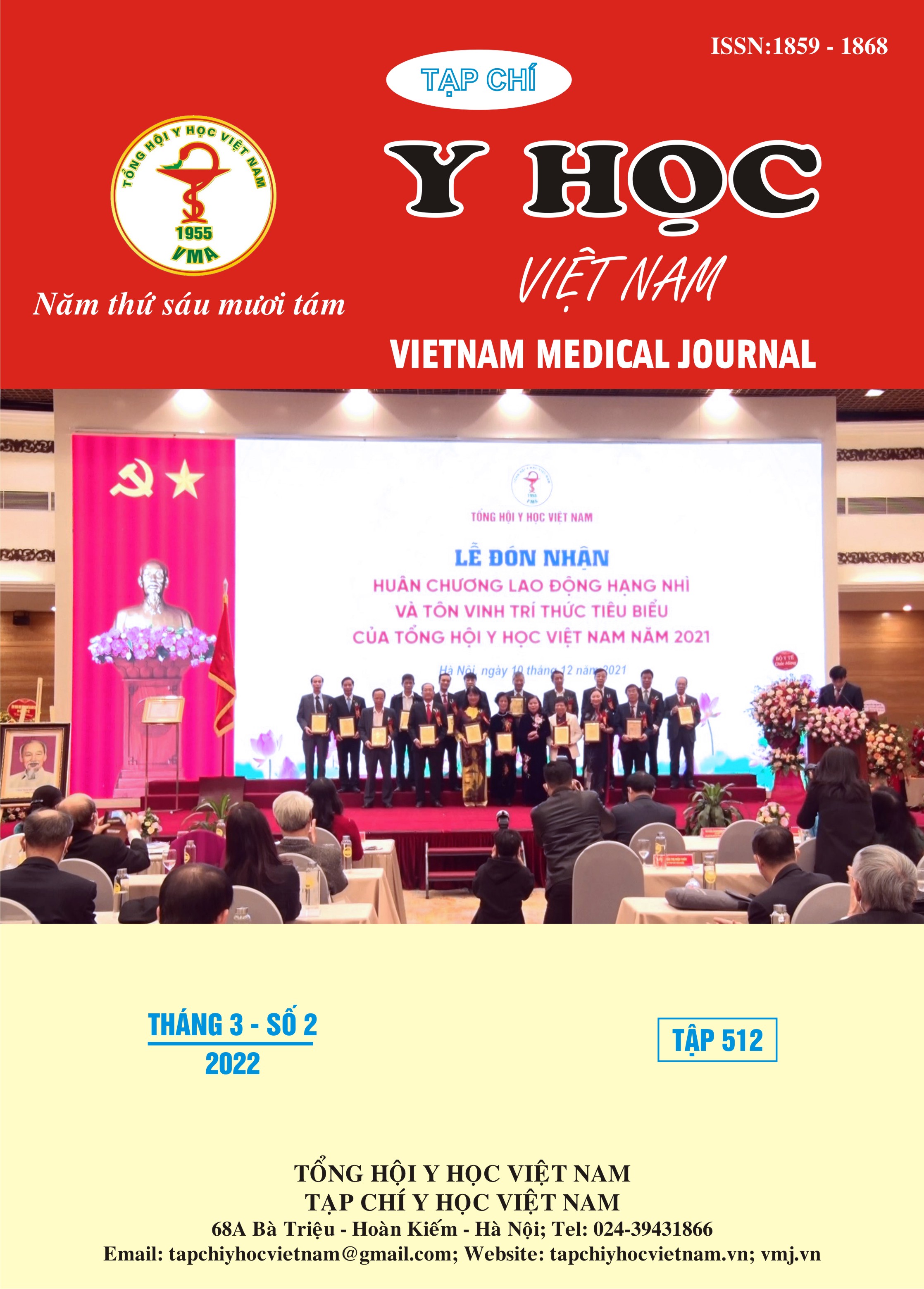COMMENT THE TREATMENT RESULTS OF DEPRESSIVE SYMPTOMS IN PATIENTS WITH SCHIZOAFFECTIVE DISORDER, DEPRESSIVE TYPE
Main Article Content
Abstract
Our study aimed to describe the treatment results of depressive symptoms in patients with schizoaffective disorder, depressive type treated in Institute of Mental Health - Bach Mai hospital. This is a cross-sectional descriptive study including 40 patients diagnosed with schizoaffective disorder depressive type according to ICD-10 diagnostic criteria (F25.1). Results: the mean age of patients was 30.3±8.2 years. There were more women than men, and the female/male ratio was about 1.4/1. Sertraline was the most common antidepressant used with these patients (90.0%),the highest dose was 125 ± 52.8 mg/day. At the start of treatment, 100% of patients had low mood, followed by 87.5% had decreased interest and enjoyment and 82.5 had decreased energy and were easy fatigue. At the end of treatment, all symptoms were relieved. The biggest reduction was found in the symptom of decreased interest and enjoyment, from 87.5% to 22.5%. Common symptoms of depression also showed a dramatic remission before and after treatment. After treatment, the proportion of patients with sleep disorders and poor appetite decreased to about 10% and 20%. Some remaining symptoms such as decreased attention, decreased libido, bleak and pessimistic future accounted for 20%, 20% and 30% respectively. The typical symptoms of depression were still in relative high proportions , such as low mood (57.5%), decreased energy (67.5%), easy fatigue and decreased activity (62.5%), distrust (42.5%).
Article Details
Keywords
schizoaffective schizophrenia, antidepressants
References
2. Azorin JM, Kaladjian A, Fakra E. [Current issues on schizoaffective disorder]. L’Encephale. 2005;31(3):359-365.doi:10.1016/s0013-7006(05)82401-7
3. Association AP. Diagnostic and Statistical Manual of Mental Disorders, 5th Edition: DSM-5. 5th edition. American Psychiatric Publishing; 2013.
4. Levinson DF, Umapathy C, Musthaq M. Treatment of schizoaffective disorder and schizophrenia with mood symptoms. Am J Psychiatry. 1999;156(8):1138-1148. doi:10.1176/ ajp.156.8.1138
5. Benabarre A, Vieta E, Colom F, Martínez-Arán A, Reinares M, Gastó C. Bipolar disorder, schizoaffective disorder and schizophrenia: epidemiologic, clinical and prognostic differences. Eur Psychiatry J Assoc Eur Psychiatr. 2001; 16 (3):167-172. doi:10.1016/s0924-9338(01)00559-4
6. Ndetei DM, Khasakhala L, Meneghini L, Aillon JL. The relationship between schizoaffective, schizophrenic and mood disorders in patients admitted at Mathari Psychiatric Hospital, Nairobi, Kenya. Afr J Psychiatry. 2013;16(2):110-117. doi:10.4314/ajpsy.v16i2.14
7. Tollefson GD, Sanger TM, Lu Y, Thieme ME. Depressive signs and symptoms in schizophrenia: a prospective blinded trial of olanzapine and haloperidol. Arch Gen Psychiatry. 1998;55(3):250-258. doi:10.1001/archpsyc.55.3.250
8. Di Fiorino M, Montagnani G, Trespi G, Kasper S. Extended-release quetiapine fumarate (quetiapine XR) versus risperidone in the treatment of depressive symptoms in patients with schizoaffective disorder or schizophrenia: a randomized, open-label, parallel-group, flexible-dose study. Int Clin Psychopharmacol. 2014;29 (3):166-176. doi:10.1097/YIC.0000000000000017


